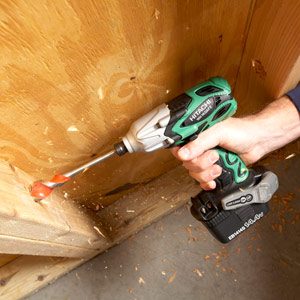 Roofing is Not Brain Surgery. There are many Wrong ways to roof a house. But…There is only…One “Right Way”, By Following All of the Manufacturers Specifications.
Roofing is Not Brain Surgery. There are many Wrong ways to roof a house. But…There is only…One “Right Way”, By Following All of the Manufacturers Specifications.Over 90 % of All Roofs Done - DO NOT Qualify for the Manufacturers Long Term Warranty!!!
( According to studies by GAF Roofing Corp., Air Vent Inc., & Alcoa, etc… )
10 Tips On “What You Should Know Before Hiring Any Contractor!!!”
By: Ed the Roofer
1) RELIABILITY: Verify that the contractor you call has been in business in your area for At Least 10 Years. Over 85 % of all roofing contractors are out of business in less than 5 years, way before the warranty expires and before many roofing problems begin to show up and cause problems. 85 % of those remaining do not last till the 10th year. (Department of Labor Statistics)
 2) INTERVIEW: Make time to meet with any contractor you call, in person, at your home to review the proposal and detailed specifications. Try to select a Knowledgeable, Organized, Experienced, and Locally Established contractor who will take a personal interest in your roofing project. Choose one who has an established track record of many similar roofing projects done in your local area. If they will farm out your roofing job to an unknown subcontractor, you should interview them as well.
2) INTERVIEW: Make time to meet with any contractor you call, in person, at your home to review the proposal and detailed specifications. Try to select a Knowledgeable, Organized, Experienced, and Locally Established contractor who will take a personal interest in your roofing project. Choose one who has an established track record of many similar roofing projects done in your local area. If they will farm out your roofing job to an unknown subcontractor, you should interview them as well.3) REFERENCES: Insist on a minimum of at least 20 - 50 recent job references & also several from each year they say they were in business. Ask for customer testimonials. Drive past several of the jobs to check for proper venting, flashing details, and general appearance. Ask previous customers if they were satisfied and if they would use them again. Contact your local building inspector for verification. Be wary if all of the references are very recent. Check out their work from several years previous.
4) BUYER BEWARE: Be suspicious if any contractor requires you to get the roofing permit. The party who applies for the permit is responsible for building code compliance. What happens when the roofing specs do not conform to the local codes? Why won’t they be responsible for it? Also, Do Not Ever pay more than 50 % when paying a deposit.
5) ADDRESS AND PHONE NUMBER: Make sure that the contractor actually has a physical location that you can find if you need to locate them in the future, not just a mailbox etc., drop box. Do they have an actual office and material storage shop or just work out of the back of their pickup truck. Make sure they have an actual local telephone # and not just a cell phone. When problems occur, it is much easier to find someone if you already know how to, in advance. Check out his driver's license address.
6) LICENSE, INSURANCE AND BONDS: Insist on receiving a copy of the Contractors State of Illinois Roofing License, General Liability Insurance, Workers Compensation Insurance and their Roofing Bond. Don’t just assume they have it because they tell you so. They should have enough pride in themselves to include a copy for each customer.
7) PROPOSAL AND/OR CONTRACT: Insist on a very thorough and detailed written proposal and examine it for complete descriptions of the work and specifications, including approximate length of the job and payment procedures. Verbal agreements should be added to the written agreement. You MUST, by law, be advised in writing of your 3-Day “Right To Rescind” if you change your mind and receive all of your deposit money refunded to you.
8) EMPLOYEES OR SUB-CONTRACTORS: If your contractor farms out the job to a sub-contracting crew, they too must supply you with their Roofing License, General Liability and Workers Compensation Insurance and Roofing Bond. If they don’t and someone gets hurt, you may be liable. The sub-contractor should be interviewed as well. Dedicated trained experienced Employees are more desirable due to continuing training and experience rather than the lowest paid new start-up subcontractor.
9) CONTRACTOR TRADE ASSOCIATIONS: Quality control begins with dedication, the amount of proper knowledge and previous training from past projects and from advanced learning through many contractor trade associations. Memberships in any related trade association and certificates of completion from manufacturer’s product training classes authenticate the more dedicated professional.
10) USE YOUR NOGGIN: 85 % of all construction lawsuits involve roofing related problems. You only have one chance to make the “Right 1st Choice”. If one contractor tells you something extremely different than another contractor, then, either do your own research, or have the contractor provide documentation to justify and support his analysis, especially about Intake & Exhaust Ventilation, Plywood vs. OSB Particle Board, Ice & Water Shield & Flashings.
You need to be concerned with the initial price only once… But you are going to be concerned about Quality…for many years to come!!!
Ed is the owner of:












